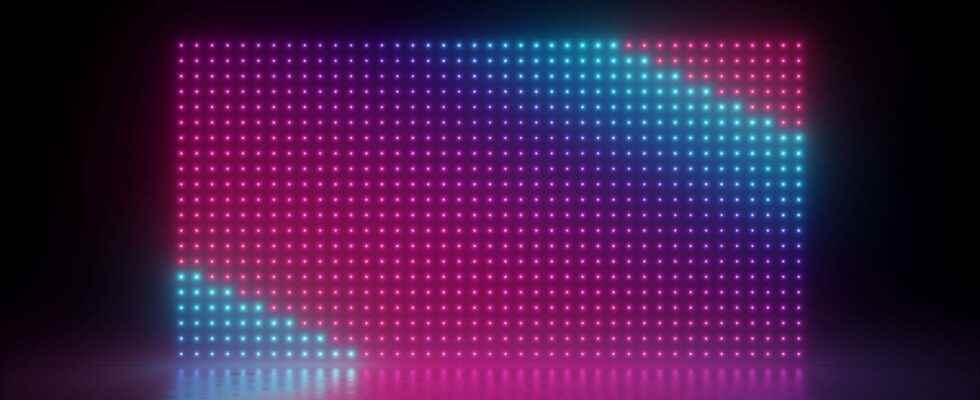Mini-LED is a display technology similar toOLED and to the LCD. The technology is mainly found in tv screens. Today, major TV manufacturers, such as Philips, TCL, LG and Samsung, all offer mini-LED TVs. Builders, such Appleare even starting to integrate it into other smaller devices like tablets or some laptop.
How does it work ?
The pixel of one LCD screen cannot light up by themselves unlike those of an OLED screen. They therefore need a source of light behind them who can enlighten them. It is what creates the luminosity and colors required. Because of this extra layer of backlighting, an LCD screen’s pixels can never be completely turned off. The blacks of a LCD screen lack the deep black of their OLED counterparts, which owe this to their ability to individually control each pixel. But if an LCD TV’s backlight is poorly implemented and controlled, there can be noticeable inequalities in how the screen describes what should be uniform areas of black. A good example is to imagine the end credits of most movies. This is a black screen with scrolling white text. When looking at the screen on an LCD television, it is normal to see a halo of light around the words, or to see the backlight peek out from the corners of the screen. The result is that what should be black is now more of a cloudy gray.
Mini-LED, a new backlight system
The mini-LED works in a similar way to LCD screens, except that the uniform lighting is abandoned in favor of multiple distinct points criss-crossing the screen with diodes on all sides. Officially, a diode whose size does not exceed 0.2 mm can be called “mini”. The basic principle, however, is that LEDs smaller allow more diodes LEDs. By placing diodes LEDs more and smaller behind the LCD pixels, images are brighter, meaning backlight control can be more focused and precise. This should allow for better control and result in less backlight haloing and stronger contrasts.
You will also be interested
Interested in what you just read?
